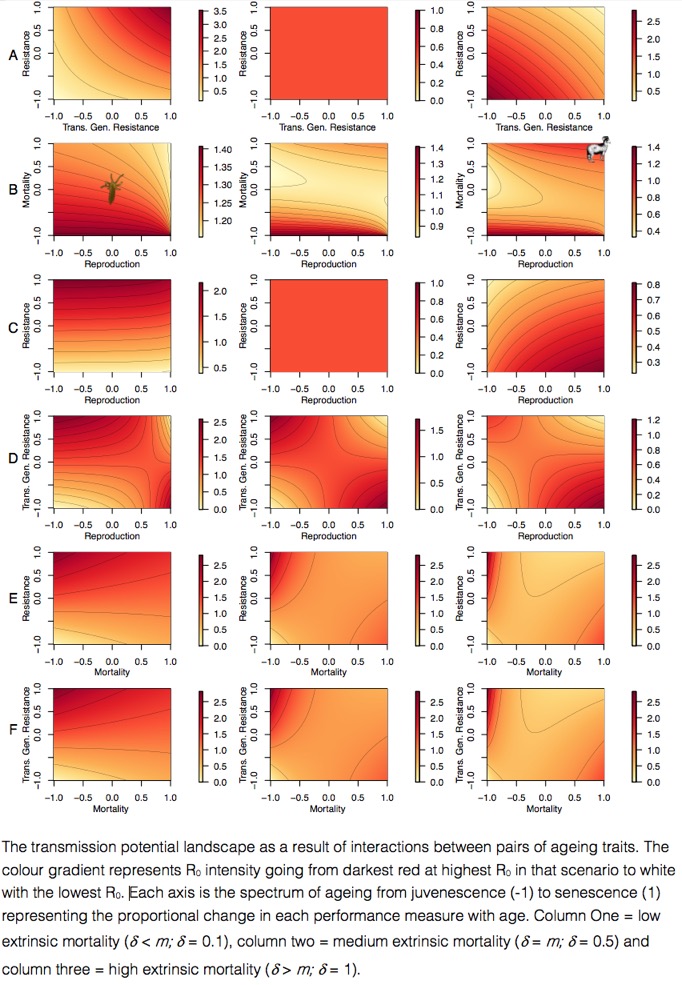Do ageing populations spread more disease?
Reproduction, mortality and immune function change with age, and they influence the spread of infectious disease. So as populations become older, can we expect epidemics to worsen?
To answer this, we first used a versatile model laboratory infection system - the crustacean Daphnia magna (A Day in the Life of a Daphnia Researcher) and its bacterial pathogen Pasteruria ramosa - to compile an ageing profile, including traits directly linked to pathogen resistance, and those that should indirectly alter pathogen transmission by influencing demography. We found considerable asynchrony in ageing across traits within a single organism - some traits senesce, other traits juvenesce
We used this observation as a foundation for generalisable epidemiological models which demonstrate that different patterns of ageing produce dramatically different transmission landscapes: in many cases ageing can reduce the probability of epidemics, though it can also promote severity. One of the many potential consequences revealed by this model is that interventions that extend life could worsen epidemics.

See also: See Clark, J., Garbutt, J.S., McNally, L and Tom J. Little (2017) Disease Spread in Age Structured Populations with Maternal Age Effects. Ecology Letters 20: 445-451 and: